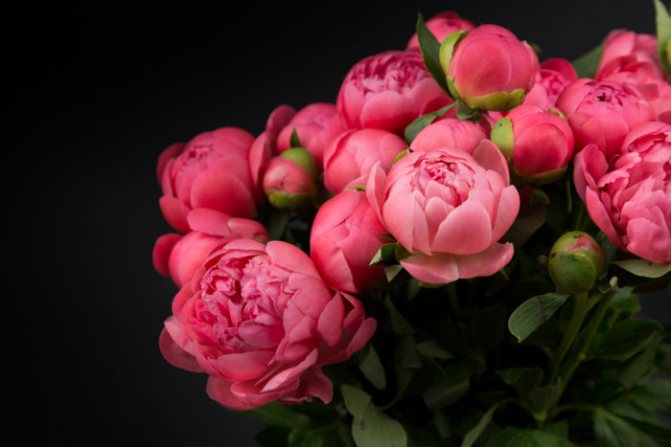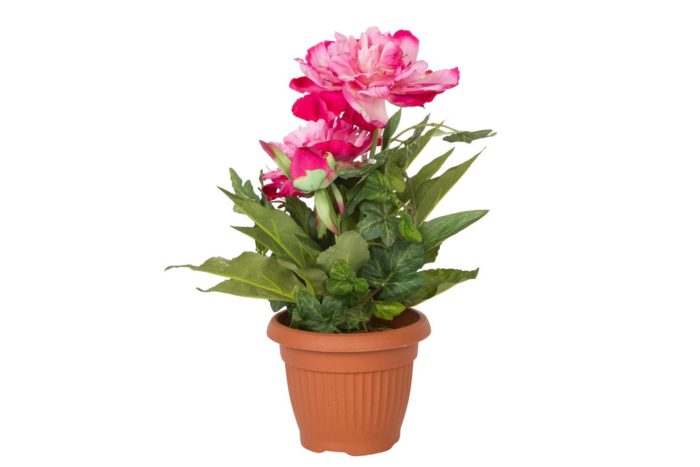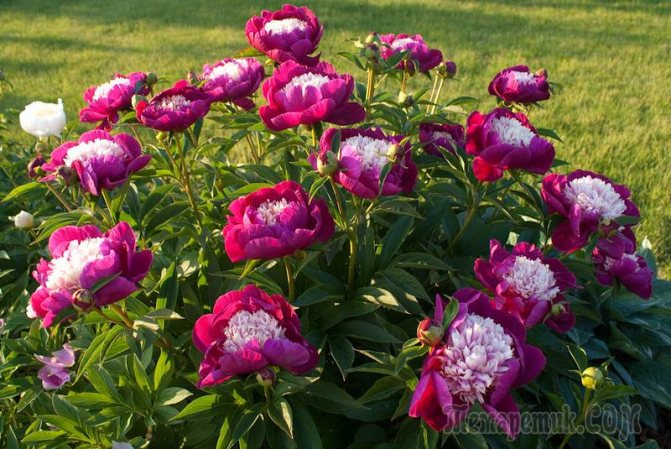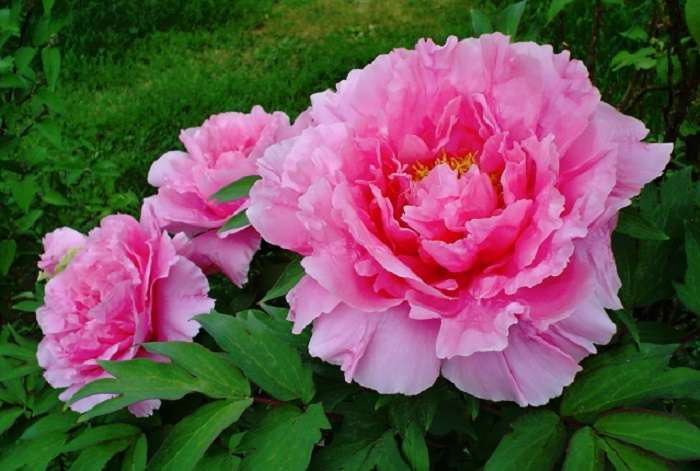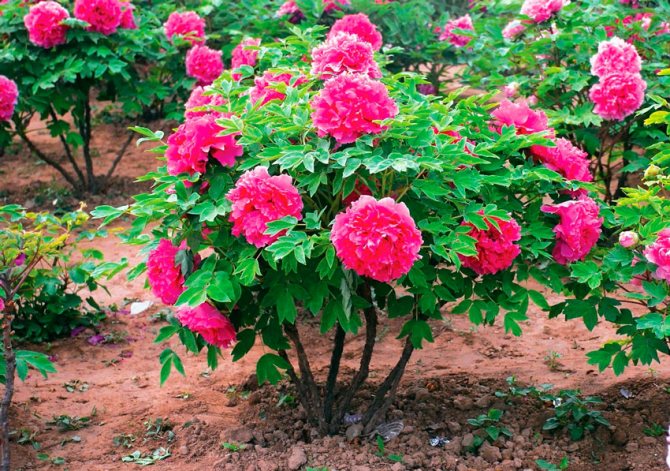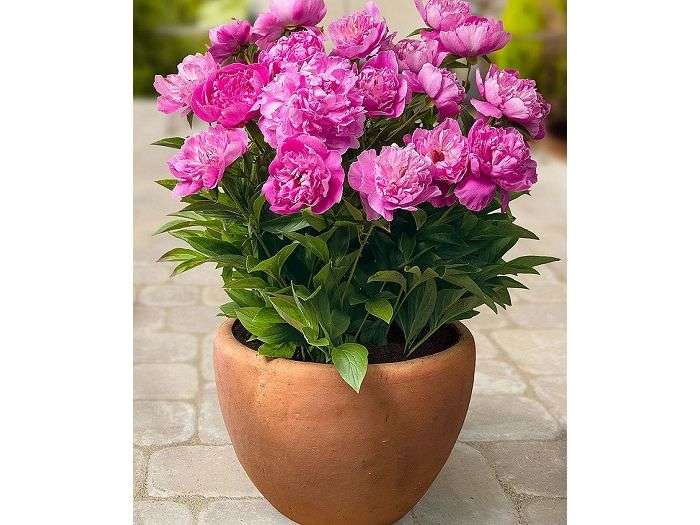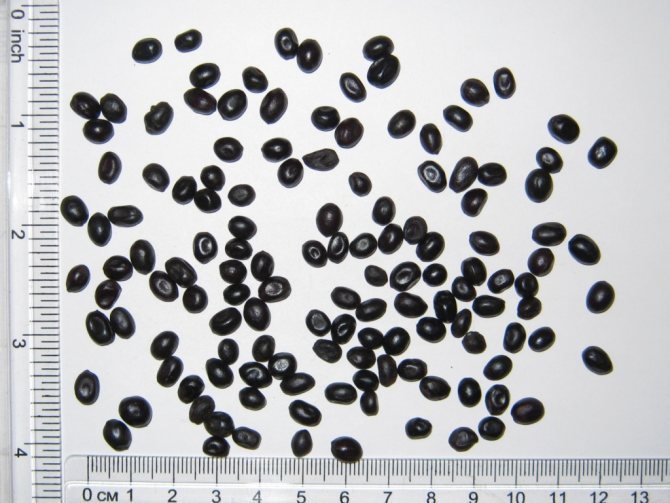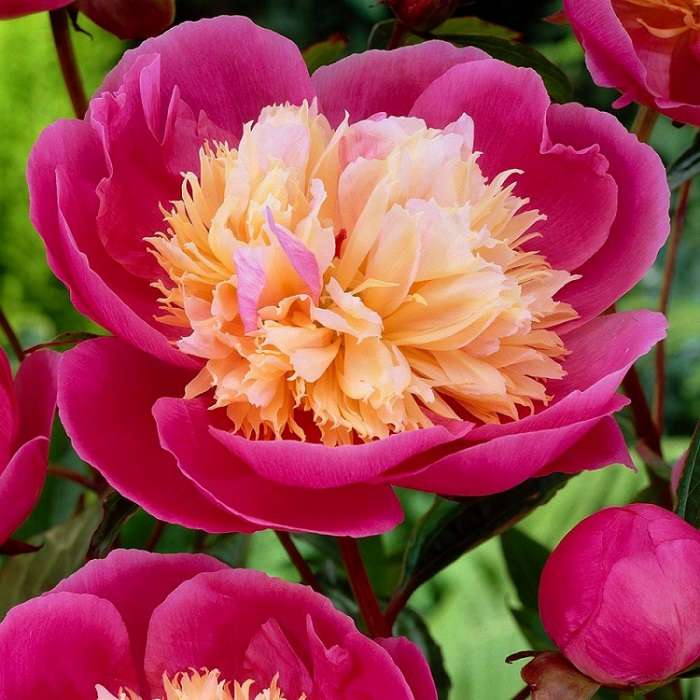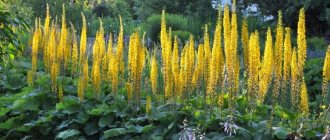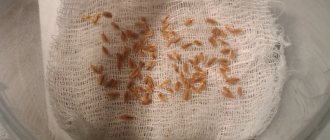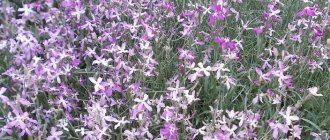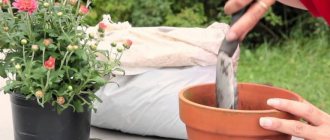Growing peonies in the open field is simple, but at the same time, once planting a bush in a good place, you can enjoy the lush flowering of this plant for many years.
If you are interested in how to grow peonies in the country, read our article. Here you will find all the information you need to know about growing these flowers outdoors and in pots.
- Pot selection
Growing peonies in the open field
Perennial peonies with large fragrant flowers are very popular among gardeners. But they attract to themselves not only by their beauty, but also by their unpretentiousness and easy care.
Note: Even after flowering, the bushes do not lose their decorative effect due to their lush foliage. In addition, these shrubs do not need an annual transplant, and with good care they can grow well in one place for more than a dozen years.
There are many varieties, both herbaceous and tree-like, as well as their hybrids, which differ in color and size of flowers, duration of flowering, as well as height and shape of the bush (Figure 1). The features of growing and caring for some of them are covered in this article.
Features of site preparation
When choosing a place for growing flowers in the open ground at your summer cottage, you should remember that their root system goes down almost a meter, so it is not recommended to plant them in lowlands, where groundwater is close to the soil surface. rot may form on the roots of the plant.

Figure 1. Features of growing flowers in the open field in the country
Give preference to an area that is well lit by the sun in the morning. In addition, the bed must be protected from drafts. The best option is loamy soil with low acidity. If the soil is too clayey, humus and sand can be added to it; in sandy soil, on the contrary, organic matter and clay should be added.
rules
Garden varieties do not need frequent transplants: they adapt to a new place for a long time. Therefore, the transplant is carried out in extreme cases, such as improper or shallow planting, lack of flowers or a significant decrease in their size. In addition, once a decade, the bushes are planted by dividing the roots.
How to grow peonies in the country, these rules will tell you (picture 2):
- Planting and transplanting is best done from mid-August to early September.
- The planting pit is prepared in advance (a week in advance) so that the soil settles a little. At the same time, its depth and width should be about 60 cm. There must be a drainage layer at the bottom of the pit, the height of which should be 20-25 cm.
- The planting pit is filled with a nutrient mixture, which includes humus (compost), superphosphate (200 g), wood ash (300 g), lime (100 g), potassium sulfate (100 g). The thickness of the nutrient layer should be 20-30 cm. All the remaining space is filled with garden soil mixed with compost.
- The rhizome of the plant is placed in the planting pit strictly in the middle, while the distance from the upper growth point to the soil surface should be no more than 5 cm.
- The planted cut is covered with garden soil and lightly tamped with hands.
- Do not worry if the transplanted bush does not bloom in the first year, it needs time to adapt.


Figure 2. Planting technology
Follow-up care consists of regular watering and loosening of the soil, top dressing and protection from diseases and pests, regardless of the method used when breeding the plant.
The ways
There are several ways of breeding herbaceous and tree-like varieties, but most often dividing the bush and cuttings are practiced, much less often - breeding by layering or seeds (Figure 3). The latter method is used only in breeding farms.


Figure 3. Methods of culture propagation: 1 - by layering, 2 - by cuttings, 3 - by seeds, 4 - by dividing the bush
The method of propagation by layering is applied to bushes that have reached 6 years of age. They start work in April, when the buds begin to develop: they spud the bush with fertile soil, water it regularly and feed it. With this care at the end of summer, well-developed roots appear on the stems, which, together with the shoots, are separated from the mother plant and planted in a greenhouse. On the eve of winter, young plants are covered with organic material (peat, straw, spruce branches). Layers are planted in open ground after 1-2 years.
The grafting method is most often used for propagating rare varieties, when, with an insufficient amount of planting material, they want to get a lot of seedlings. Plants 4 years of age and older are suitable for harvesting cuttings.
Note: The planting material is cut from late May to mid-June, then kept for 8 hours in a root formation stimulator and planted in a greenhouse.
The most effective breeding method is called the method of dividing the bush. In addition, it is also used to rejuvenate plants that have not been transplanted for more than 8 years. The most optimal period for dividing the bushes is from August 15 to September 5. The bush is first dug in with a shovel, and then carefully removed from the ground along with the rhizome using a garden pitchfork. The roots are cleaned of earth residues, washed under running water, and the plant is left for several hours in a dry place in partial shade. Immediately before dividing, the stems should be shortened so that their height is 10-15 cm from the ground, and the bush itself is divided into parts called delenki. In addition, each of them should have several growth points and adventitious young roots, at least 8-10 cm long. Delenki are soaked in a growth stimulator solution for 8 hours, after which they are planted in prepared planting pits.
The author of the video will tell you how to properly propagate and plant these flowers.
Why do you need a transplant
Pros of the plant:
- a popular spring flower that is most often found in flower beds;
- bright aroma;
- variety of color palette;
- splendor of flowering;
- ease of caring for him (not capricious, does not require close attention, frequent watering and too nutritious soil).
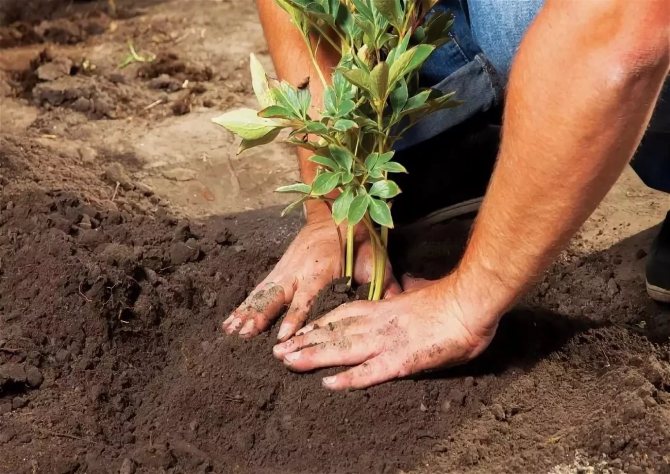

Planting a bush on the site
Even if these shrub plants have been properly planted and have grown successfully for a long time, sooner or later they may need to change their location.
What factors indicate that it is time to transplant homemade peonies:
- lack of enough space. After all, every year this plant occupies more and more territory, which can interfere with neighboring crops and lead to a deterioration in the flowering of the shrub. What to do? Plant a bush, while dividing it into several smaller parts, if these are not indoor peonies, which will be discussed in another article;
- long growing season.A similar one is found in the peony of the Kelweiss Glorios variety. Due to the long process, there is a risk of contracting certain diseases. In this case, it is possible to detect a lack of nutrients, which significantly affects the growth of the bush;
- the need to change location. At home or in the country, changes sometimes occur: new buildings appear that can interfere with the growth of peonies, or the arrangement of the flower bed simply changes;
- if the flowers have been growing in the same place for about 10 years, then you can notice the shredding of the flowers, which also indicates the need to transplant the plant.


Powerful roots of the bush
Growing a tree peony from seeds
For growing a tree variety from seeds at home, it is best to use freshly harvested planting material. After 3-4 days of drying, the seeds are sown in a box filled with wet sand to a depth of 3-4 cm, the crops are covered for the winter. In such conditions, seeds can germinate both the next year and the second or third (Figure 4). Therefore, to accelerate germination, scarification and stratification procedures are carried out.
Note: Scarification is the filing of the seed coat; stratification, on the other hand, implies keeping seeds under variable temperature conditions. So, in the fall, a box with seeds is left in a cold room, and in the spring they are kept at a temperature of + 20-25 degrees.
If the seeds were harvested unripe, that is, before the disclosure of the carpels, then the cultivation technology is somewhat different. So, the seeds are placed in moist peat and stored in a warm room at a temperature of + 20 + 25 degrees for two and a half months. At the beginning of February, containers with seeds are transferred to a cold room (refrigerator), where they are kept until May at a temperature of + 5 + 8 degrees. In May, seeds are sown in open soil to a depth of 4-5 cm, where they germinate in the same season.


Figure 4. Growing a tree variety from seed
Young seedlings are watered and fed several times with a carbamide solution (50 g per bucket of water). For the winter, they are covered with a layer of organic mulch (peat, dry leaves, spruce branches). Overwintered young plants are planted in open ground in a permanent place in the spring, after which they bloom the next year. The rules for the preparation of planting holes, nutrient substrate, care features are the same as for planting conventional herbaceous varieties. In general, it is worth noting that growing a tree plant from seeds is rarely used, since it takes several years to get an adult plant. Moreover, this method is often used for the propagation of rare varieties.
How should peonies be handled after purchase?
When purchasing this plant, you should immediately take care of its preservation. It should be planted in a container after the first buds begin to hatch. Until this moment, experts recommend keeping the plant in the refrigerator, since in such conditions the flower will grow well.
As soon as the buds begin to appear, the cuttings can be transplanted into a pot with pre-prepared soil. These flowers react extremely negatively to transplantation, therefore, experts recommend immediately planting them in a large container.
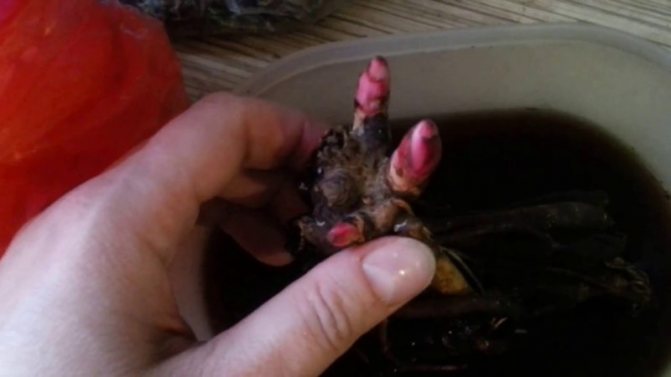

Milk-flowered peony Charm: grown from seed
Milk-flowered peony Charm is a representative of large winter-hardy perennials. It grows well and blooms in northern latitudes. Unlike ordinary herbaceous varieties, the flowering period of the milky-flowered variety falls on the month of May (Figure 6).
Note: This variety is not only an ornamental, but also a medicinal plant.


Figure 6. Cultivation of lactoflower peony Charm
Like all peonies, it feels comfortable on loamy soils, which are well lit by the sun. Its stems and leaves form a shrub with a height of 60 cm to 1 m, and large simple and semi-double flowers delight with a pleasant aroma. As a rule, seeds are sown in open ground in autumn to a depth of 3-4 cm.Moreover, their germination occurs both in the next season and in a year. If sowing is carried out in spring, then the seeds must first undergo a stratification procedure.
Choosing soil and pot for home
Gardeners advise using a potting soil mixture with peat to fill the pots. Planting should be done in a container that has a drainage layer. Due to this, moisture stagnation is excluded, which can lead to root rot.
You can make your own soil mixture by mixing the following components:
- river sand;
- humus;
- garden land.
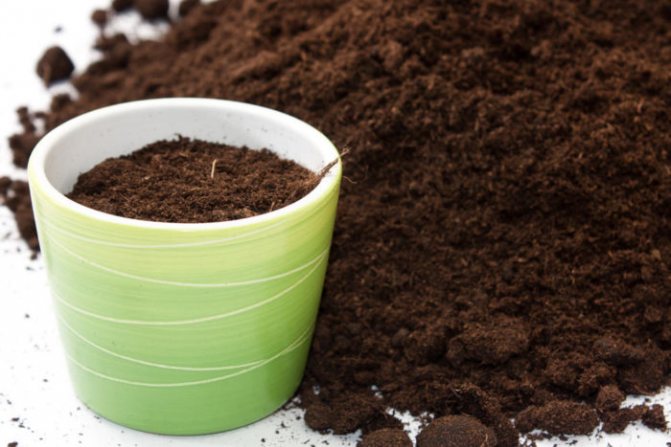

This composition needs components such as ash and superphosphate.
You need to select a pot based on the growth of the flower. It is worth taking into account that the plant needs a lot of space. The best option would be a pot that is 50-60 centimeters in diameter and 30-40 cm deep. If the species is large, then an even larger volume will be needed. It is also worth providing that there are holes at the bottom of the container. The best option is considered to be pots with a volume of 5 liters.
Interesting! You can plant peonies in wooden boxes. Their inner surface must be covered with a dense non-woven material.
Peony root Maryin: growing from seed
Peony Maryin root is also known as the evading peony (Figure 7). He prefers dry soils without stagnant moisture, well warmed up by the sun, although he feels good in the shade of ornamental and fruit trees. It is widely used not only in gardening, but also in folk medicine.
Note: Reproduction of the Mary's root can be carried out both vegetatively and by seeds. The latter method allows you to get a large number of bushes at the same time.
For fast germination of seeds, they must be carried out through the stratification procedure, which consists of two stages. At the first (warm) stage, the seeds are in wet sand at a temperature of +25 degrees for 2 months. At the second (cold) stage, the planting material is kept in a moist substrate at a temperature of +5 degrees for a similar period of time.


Figure 7. Growing a peony Maryin root
The prepared seeds are sown into the ground to a depth of 2-3 cm, after which they are fertilized with manganese and boron (in the active growing season), as well as infusion of mullein with the addition of potassium-phosphorus fertilizer (at the stage of bud formation). In autumn, the above-ground part of the bush should be cut off, leaving 10-15 cm high shoots above the soil surface, and the plant itself should be mulched with organic matter for the winter.
The necessary conditions
To get a lush flowering of peonies in your own apartment and grow a healthy bush, it should be as comfortable as possible. If the flower was planted incorrectly, then the shoots will form weak. In such a case, flowering may not occur.
The main conditions that must be observed when growing a peony at home:
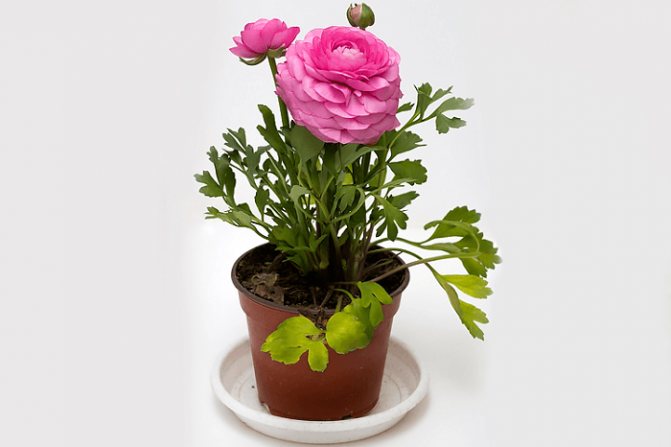

- Wide and spacious pot.
- Compliance with the light regime.
- Proper watering and regular feeding.
To make it comfortable for a lush plant, you need to choose a pot of at least 5 liters. If you don't want to plant in a pot, you can replace it with a box. Whichever container is chosen, it is worth making drainage holes. Excess moisture, which is not needed by the flower, leaves through them.
Top dressing
The first two years are not fed. The bush has enough nutrients, which are put into the pit during transplantation. Subsequent years in April, horse or cow manure (rotted) mixed with nitrophos (100 g / m3) is scattered around the bush. Then digging is carried out, the soil is covered with a layer of humus.
After 2-3 weeks, the plants are fed with liquid fertilizer prepared according to this recipe:
- mullein infusion - 10 l;
- phosphate fertilizers - 40 g;
- potash fertilizers - 20 g.
This portion is for 3-5 bushes.
The last time a year, feeding is carried out after flowering. To process 1 m2 of land, mix:
- 10 liters of pure water or the same amount of mullein infusion;
- 15 g of potassium sulfate;
- 25 g superphosphate.
The first year, two foliar dressings are carried out - first in May, then in June or July. Mineral fertilizers diluted in water, the bush is watered from a watering can with a fine sieve or sprayed.
For the May treatment, a solution is prepared from 50 g of urea and 10 liters of water. For June, one tablet of complete micronutrient fertilizers is added to an aqueous solution of urea. The next year, the peony is fed three times, but for the third procedure, two micronutrient tablets are diluted in 10 liters of water.
Experienced gardeners, when foliar feeding, recommend adding a tablespoon of grated laundry soap to the fertilizer. This allows nutrients to stay on the surface longer.
Requirements for planting material
High-quality planting material is the key to a healthy life and abundant flowering of a herbaceous peony in a new place. Let's list the main requirements for it. This is the absence of rot and any signs of disease, dead tissue, multiple shovel wounds. It is better to powder large sections with wood ash.
When dividing the rhizome, a lot of waste remains, for example, root tubers without visible shoot rudiments. You shouldn't throw them away. A beautiful bush can grow from them, which will bloom in the third - fourth year. This variant is ideal for the medicinal peony (P. officinalis) and its hybrids. In varieties bred from P. lactiflora with fusiform roots, the rooting of "stumps" is more difficult.


An overgrown bush of a herbaceous peony gives a lot of planting material
The main mistake of many amateur gardeners is associated with our desire to use a large piece of old rhizome when planting a peony. At the same time, the plant does not rejuvenate, the meaning of the transplant disappears.
Second year
In the next season, the bush is transplanted to a permanent place, no later than August. It should be borne in mind that peonies do not like frequent transplants.
Dig a hole with a diameter of 70 cm and the same depth. The bottom is loosened and drainage is arranged - brick chips, sand, fine gravel are suitable. Then the pit is filled according to the following scheme.
The plant is planted so that the place where the stem passes into the root (root collar) is flush with the soil surface. The roots are carefully straightened, the earth is not tamped - it will settle on its own. They fill up the earth to the surface of the pit.
The first buds are plucked after transplantation. This is done in order for the plant to form large buds.
Flower care
Peonies are very light-loving flowers, for this reason, direct sunlight is very important for them. They do not tolerate dark rooms. In winter, lamps will help you. Place it over the flower and leave it on throughout the day. The peony should receive light for at least eight hours a day.
You do not need to water the flower often, but you need to make sure that the soil does not dry out. As soon as you feel the drying out of the top layer of the soil, feel free to start watering the flower. At the same time, watering should be uniform, and it is better to use water at room temperature.
Peony does not tolerate drafts and close proximity of batteries.
It is best to feed the peony with the appearance of the first stems. Fertilizers should be for indoor plants, feeding should be done once a month. With the onset of the dormant period for peonies at the end of summer, we recommend cutting the stems and reducing watering.
This is not an easy process that awaits all those who decide to take up the cultivation of this flower, wonderful in its beauty. And if you approach this process with good sense and attention to detail, in the end you will be rewarded with this wonderful and rich flowering. The network of flower shops "Tea Rose" is always ready to share with its guests the necessary and effective tips for flower care.If you are one of those who still prefer to enjoy a bouquet of flowers in a vase, our widest, exclusive selection will not leave you without a purchase. Here you can not only buy peonies in the autumn - winter season, but also pick up a gift in the form of a decor for your home. In our decor online store, you can buy a vase, soft toys, exclusive natural aromas SECRETS D "APOTHICAIRE, as well as take care of New Year's home decor. Here you can find absolutely everything you need for home comfort and your good mood.
Can I grow on the balcony
The balcony is a great place to grow peonies. The flower will delight if you follow all the advice regarding its growth.
For this, optimal conditions should be provided:
- If the flower grows slowly in spring, nitrogen-potassium fertilizers are required to the soil. They help stimulate growth.
- If you notice that the flower is lethargic, you should install fluorescent lamps. They will supplement the lack of light, which will stimulate the growth of the plant.
- Florists claim that peonies can be grown on the balcony in winter. To protect the flower from freezing, it should be covered with a material that retains heat.
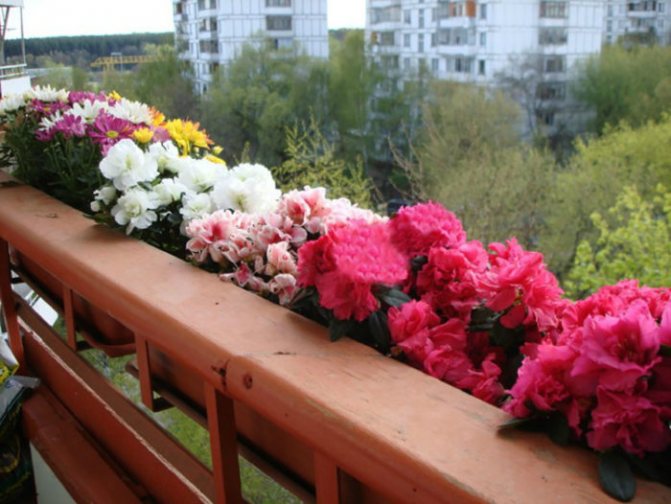

With proper care of the flower, you can enjoy its flowering for a long time without cutting off the side buds. The flowers will be large. When cut, the flowering period is increased to three weeks. After the completion of budding, it is necessary to prune all the stems. Top dressing should be done with the introduction of potassium and phosphorus. Due to these minerals, the shrub will delight flower growers with large buds. With the onset of the autumn period, the flower should rest. For this purpose, it can be moved from the balcony to a cool place, such as a cellar or garage. As soon as the new season comes, the plant can be put in its original place.


